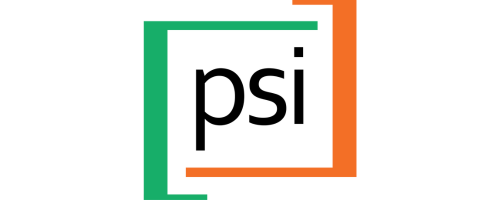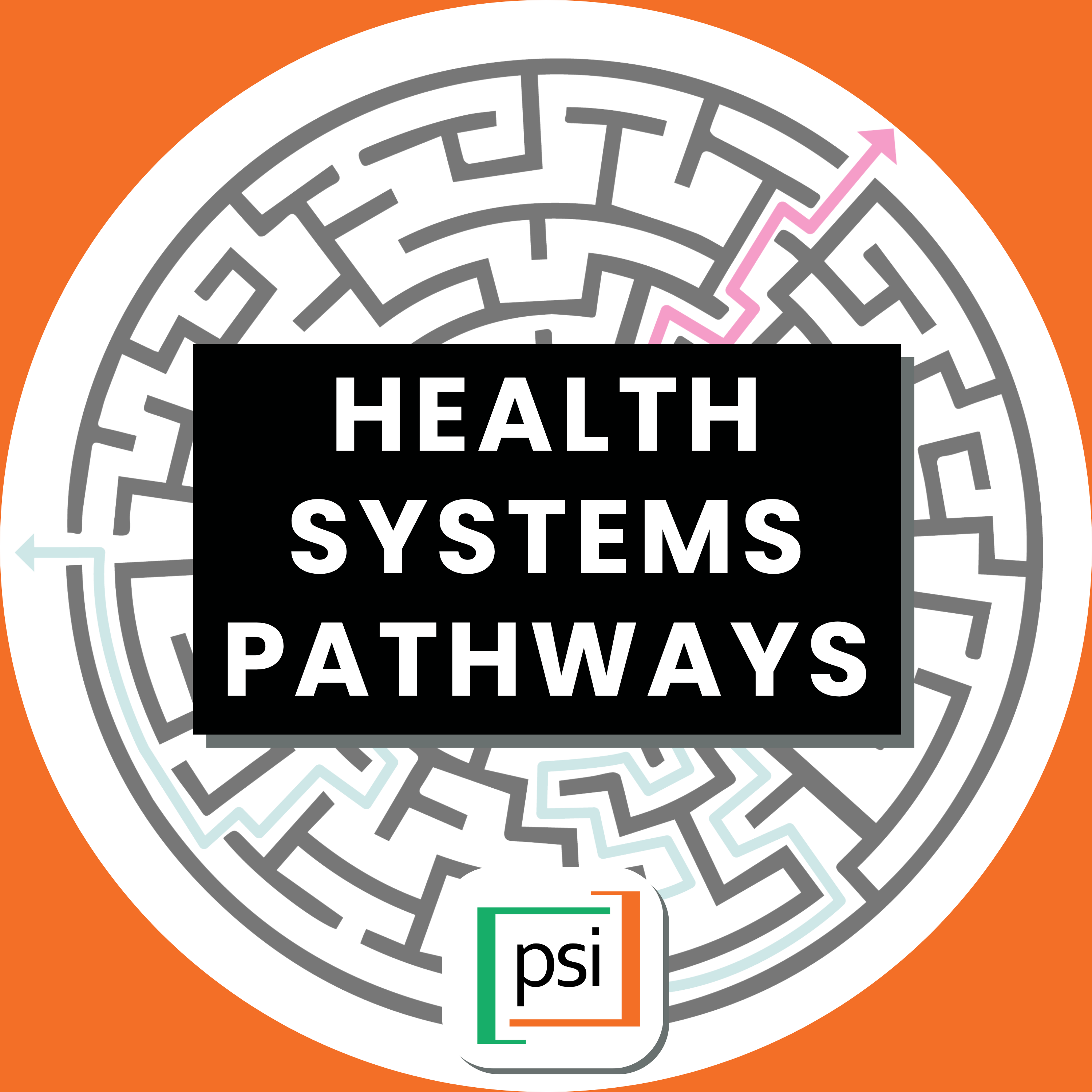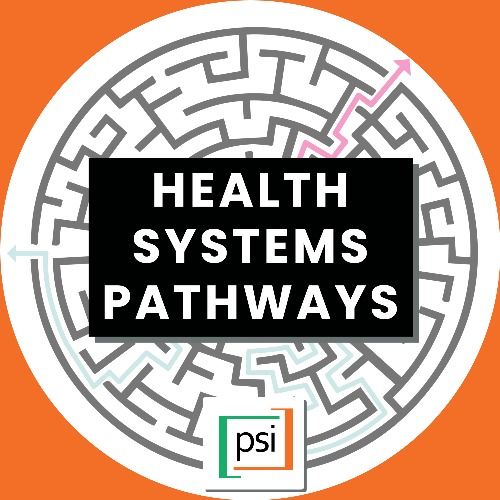Episode 10
Strategic Investment for Health System Resilience
What does it really mean for a health system to be resilient? The term is widely used but often lacks clarity. In this episode, recorded live at the Prince Mahidol Award Conference (PMAC) in Bangkok, host Alex Ergo speaks with Professor David Bishai about the World Bank's new publication, "Strategic Investment for Health System Resilience."
Professor Bishai unpacks key insights from the book, including a three-layer framework for investing in resilience, the connection between essential public health functions and resilience-building, and how countries can strategically invest in strengthening their health systems—not just for future crises, but for everyday health system improvements.
Host: Alex Ergo, Director of Health Systems, Population Services International
Guest: Professor David Bishai, Professor of Health Economics and Health Systems, Johns Hopkins Bloomberg School of Public Health
For more information:
HSS Insights Series: PSI - To access Population Service International's blogs and policy briefs, visit our health systems insights website.
Transcript
Alex Ergo: Hi everyone, and welcome back to Health Systems Pathways. I’m Alex Ergo, PSI’s Director of Health Systems. Today, I’m excited to bring you a new episode recorded live at the Prince Mahidol Award Conference, also known as PMAC, in Bangkok.
Have you ever wondered what we mean by a resilient health system? The term resilience is used a lot these days, and it wouldn’t hurt to have a bit more clarity and consensus as to what it actually means. And this is precisely the focus of today’s episode.
So, let’s dive in!
__
So, I’m now with Professor David Bishai, and we just came out of a session where the new publication from the World Bank, Strategic Investment for Health System Resilience, was launched. Let’s get a few insights into this new publication from Dr. Bishai.
So, Dr. Bishai, would you first start by introducing yourself?
David Bishai: Hi, thanks for having me, Alex.
My name is David Bishai. I'm a Clinical Professor at the Hong Kong University School of Public Health, and I’m also the Director of the school. My background is in health economics, where I worked throughout my career as someone who was usually tasked with showing the value of our investments in various public health strategies.
During COVID, I became convinced that where we needed to invest was in our public health capability. So, the World Bank started working on this series on resilience, and the book we’re going to talk about today is about a three-layer framework for where finance officers in countries in countries can actually invest money and see results that look like resilience.
The book has a first three chapters on overarching concepts and then a series of country case studies of countries that exemplify ways to invest in essential public health functions and resilience. So, that’s really where we are, Alex.
Alex Ergo: Great. And the presentation you just gave in the session focused on one specific chapter, which is about the implementation pathway to build resilience in health systems. Would you mind saying a bit more about that?
David Bishai: Yeah, our chapter started with the challenge of trying to show a pathway between spending money and getting resilience. Readers know how to spend money—you start to do interventions and programs, you write terms of reference, and very often, we’ll do some vertical program focusing on delivering a service with very specific outputs to track.
Readers really don’t have examples of how to spend and get resilience, nor was there a lot of clarity on what it is. So, we first focused on harvesting what scholars and practitioners have done in terms of defining what resilience really means. There’s a lot of scholarship trying to define it, and scholars all agree that it’s kind of elastic. It’s a rubbery term that means different things to different people. Everyone thinks they know what it is, and it turns out they all like it. They all say they want more of it, and that’s a good thing.
The elasticity and the rubbery nature are good because no one can actually disagree with it. One way to get some clarity, though, is to ask: What would a resilient system look like? It would have to be able to go through a crisis and come out better than it was, and able to perform its essential operations during a crisis.
When we looked for the best definitions, we found that the Rockefeller Foundation, under the leadership of Judith Rodin, had put years of effort into a resilience project. Judith Rodin published a book called The Resilience Dividend, where she said that a resilient system of any kind, let alone a health system, but even a health system, has five properties that make it resilient.
The properties are: The ability to be sentient—It can find out what is going on in its local environment. So, the ability to know what's going on is the first principle. Second, it has diversity. It is able to connect to multiple areas inside its operations. It has a self-regulatory property – it can change how it runs itself. It can reconfigure. Very hard for some systems to even do that… they have inertia and ways of doing things that are long established, and when they go into a crisis, they cannot change quickly. So, the self-regulation is the third element. They are integrative, meaning not only that they have diverse elements, but they have a way of integrating and pulling them together to react to a crisis. And then finally, we want a resilient system to adapt—to actually make those changes. So, they bring in data, they deliberate about how to use it and then finally they act or it.
When we got to our chapter on how to invest in something that does all that, we saw a very important correspondence between the essential public health functions that we teach in schools of public health and all of those elements of resilience. A public health department has to do those things. It has to collect data—epidemiological surveillance and outbreak investigations are part of core essential public health functions done in a state, local or small health department.
Then, essential public health functions include mobilizing communities, informing and educating stakeholders, and devising policies with stakeholders on what to do. Those are also essential public health functions. And finally, assuring that there are solutions to the public health problem, whatever it is. Those are essential public health functions to design and enforce laws, to create a capable workforce. These are terms you will find in the world’s compendium of essential public health function checklists.
So, we put it all together and said that if you want a blueprint to invest in resilience, you should measure the essential public health functions in your health system. You should ask: Can our workers do these things? There are tools that we outline in our book—several dozens of toolkits that have been used over time to ask public health workers to self-assess their capability to do these things—to do surveillance of diseases and to share data, and to create solutions and implement them. So, we can actually get to quantitative scores of these capabilities.
In the past, you’ll find implementations that measured performance, put it in a white paper, filed it with the ministry, and walked away. And that was the end of the project. And that’s a start, but it’s certainly not the end of the game. What we found is a literature on audit and feedback, where you check performance, sharing it with the workers themselves, giving them feedback, and working out a strategy for performance improvement. And then coming back repeatedly to check—the way a supervisor or a coach would do. That word "coaching" is the sort of relationship that needs to be part of this.
So, this is a way to invest. And when we wrote the chapter, we explicitly stated that this is not another packaged intervention; this is not another vertical program where you need your whole set of new workers and new money. This is something that should be part of any health system. If you’re going to help people in your public health system, you need to have an accountability mechanism to ask: Can they do the work assigned to them?
The blueprint is spelled out clearly in the book, where we would get these checklists and modify them for a local environment. And there are cases throughout the world. We cover cases in Mozambique, Angola, and Botswana, where the National Health Institute convened a high-level workshop to look at what it wanted to measure in terms of essential public health functions and take stock of what its subnational, local public health departments were able to do. In these conversations, some workers realized, Oh, I didn’t know I was supposed to do that. I thought I was just supposed to run the clinics all day long. And the supervisor would say, Well, you know, actually you’re a public health official, and you need to be doing everything in the essential public health functions.
So, there is a way to be deliberate, measure performance and invest in making it better that pays off right away in terms of getting you the things that most people in the health department want right away—they want children to be vaccinated; they want clinics to stay open; they want workers to go door to door, doing health promotion and changing access to clean air, clean water, clean products… all of the things you would want your public health program to do to stop crises and prevent diseases. You get that right away if you get your public health department to get back to its basics and know what they're supposed to do. This is a way to take the health workforce and return it to its true origin, which is to be practicing public health.
I hope that gives you a sense of what's in the book, Alex. Over to you.
Alex Ergo: Yes, this is great. Thank you very much, David.
One point I took away from your presentation was the importance, which is not always clearly understood, that investing in these capabilities is not only to prepare for future crises, but that it’s also to strengthen your system every day.
This is the first day here at the Prince Mahidol Award Conference… anything that you're excited about for the coming days at the conference?
David Bishai: Yeah, I always love coming to the Prince Mahidol Awards Conference. I think this year, something that's a little bit different is, you know, we're having the conference just days after the Americans pulled out of the World Health Organization, where we're seeing a shift into where the spotlights will be in public health and global health. And Prince Mahidol is the secret treasure of Asian examples of some of the best practices in public health, and there's no accident that we're having this meeting in Bangkok, because for decades, the Thai people have created a focus of their government—I think the people get a lot of the credit, but so does the government for being very thoughtful and very deliberate on creating the conditions in which people can be healthy. So, it's exciting that that spotlight can be on Asia for now.
Another thing that just happened in Asia are studies showing that Asian-created artificial intelligence systems are outperforming some of those in the Silicon Valley, creating an excitement that maybe Asian developments in turning the usefulness of AI to our public health needs can show promise. And those developments can be something that the entire world needs to work on. But here in Asia, with a whole conference with AI as its theme, we could expect a lot.
This is an area where, like any new technology, we need to harness it, we need to put on guardrails. We know that technology moves faster than our ability to keep people from harming themselves with it. But historically, people in public health have always been the ones to find the harms in technology using those same systems that I said: to do surveillance and find out where the harms are coming from, and then to think together and to co-create the regulations with the people affected by the system, and then to implement them. The same will happen with AI—to work with affected communities who are seeing how AI is affecting them can find a way to create the type of regulations that are win-win: they’re good for the industry, that wants to have their technology used for good—while making money, let's be honest… AI is a business. But even business thrives when it stays away from harming people. And so, the public health profession, as it turns towards thinking about the use of artificial intelligence in medicine and in science and in surveillance, I think a conference like this is the exact right thing to do and the exact right place to have it.
Alex Ergo: Well, thanks a lot, David. Thanks for taking the time to share your insights, and congratulations on the launch of the book. Enjoy the rest of the conference.
David Bishai: Thank you so much, Alex, and to your listeners, I really hope you take a look at the book. It’s easy to find, and we’ll put a link on the podcast.
__
Alex Ergo: That brings us to the end of this episode. A huge thank you to Professor David Bishai for sharing his perspectives on how strategic investments in public health functions can build truly resilient health systems. His reflections remind us that resilience isn’t just about preparing for future crises—it’s about strengthening health systems every day.
If you found this conversation valuable, don’t forget to subscribe or follow Health Systems Pathways for more stories and lessons from the Prince Mahidol Award Conference in Bangkok.
Until next time, I’m Alex Ergo. Let’s keep working together to build stronger health systems that work for people!




